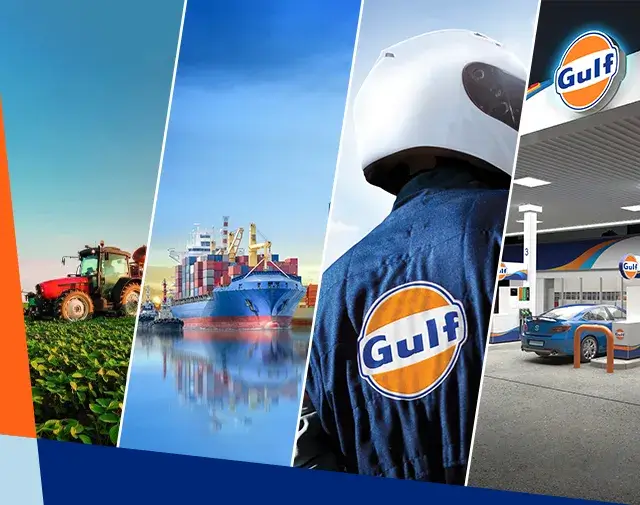Maximising Uptime & Reducing Maintenance Costs for Off-Road Fleet
10 Jul 2025

Every minute counts in the mining, construction and agricultural industries, so unexpected fleet downtime can lead to project delays and time pressures. Additionally, machinery can be dangerous if it’s not maintained correctly, and it’s expensive to repair. However, by properly maintaining off-road fleets, you can make your vehicles more reliable and reduce the cost of unplanned repairs.
In this blog, we’ll explore how regular maintenance and a proper lubrication strategy are key to extending service intervals, reducing machinery breakdowns and lowering operational costs.
The impact of effective lubrication
Off-road machinery must operate in harsh environments, often exposed to dust, heavy loads, long idle times and extreme fluctuating temperatures. That’s why lubrication is so important. It includes engine oils, hydraulic fluids, greases, and other specialised products, essential for protecting components in harsh off-road conditions.
Without a lubrication strategy, machinery is vulnerable to wear and tear, which results in breakdowns, unexpected repairs, and costly downtime. Here’s how a consistent approach to machinery lubrication makes a difference:
1. Prevents wear and tear (even in demanding conditions)
Every moving part in your fleet, from engines to hydraulic systems, is under constant stress. Using the right oil and grease reduces friction, disperses heat, and prevents metal-on-metal contact that accelerates wear.
2. Extends the lifespan of key components
When machinery components are well-lubricated, they last longer. By protecting transmissions and hydraulic systems from corrosion and overheating, you reduce the odds of failure and extend the life of your assets.
3. Increases time between services
Lubricants that resist breakdown under pressure mean you can safely stretch service intervals. Fewer oil changes and less downtime for maintenance mean more operational hours on the job.
4. Reduces costly repairs and parts replacements
Preventative lubrication improves performance and saves you money. Avoidable failures like seized components, cracked seals, or scorched gears can all be prevented with consistent, high-quality lubrication.

Predictive maintenance improves fleet uptime - even in harsh conditions
Fleet managers are always facing pressure to reduce operational costs, so this is where predictive maintenance can help.
What is predictive maintenance?
Predictive maintenance uses data analysis and condition monitoring to keep track of vehicle and equipment health. It can predict when equipment is likely to fail, so you can schedule maintenance or repairs before significant damage occurs. This can reduce unplanned downtime and extend the life of vehicles and equipment.
How lubricants play a role
Oil condition monitoring is a key enabler of predictive maintenance, offering early insights into equipment health through fluid analysis. This helps to ensure all vehicles and machinery are correctly lubricated, as well as preventing over-lubrication, which can also lead to failures.
Real-time data and early detection
Advanced lubrication technology allows fleet managers to see real-time information about machine wear, lubricant contamination and condition. This helps to predict wear and tear and schedule maintenance before failures occur.
The benefits of predictive maintenance
Predictive maintenance can help fleet managers to plan and budget better, with benefits including.
- More accurate servicing and maintenance scheduling
- Reduced vehicle downtime
- Cost-saving on expensive repairs that can be prevented through predictive maintenance

Cost-effective lubrication practices
Implementing a predictive maintenance system for proper vehicle and machinery lubrication might be lengthy and expensive upfront. However, once your plan is in place, proper lubrication practices can result in long-term cost savings to help you maximise operational efficiency.
|
Lubrication Practice |
Considerations |
|
Choose the right lubricant |
|
| Maximise lubricant efficiency |
|
| Prevent over or under-lubrication |
|
| Weigh up cost vs. quality |
|
4 practical steps to maximise uptime
To get the most out of your fleet and to prolong vehicle and machinery life and ultimately, operational efficiency, there are 4 main focuses:
-
Don’t delay scheduled maintenance
The service intervals recommended by manufacturers are there for a reason. You should follow these for optimum performance, safety, vehicle and equipment longevity and to address any potential issues.
-
Listen to operators
As well as knowing how to operate off-road vehicles and equipment safely, the correct use can improve performance. Trained operators can recognise early signs of mechanical failure, which can reduce operating costs and improve performance. Ensure you have a proper procedure for operators to report any issues they are encountering.
-
Check lubricants regularly
Oil analysis, regular machinery inspections and routine lubricant checks can all contribute towards the smooth operation of machinery and off-road vehicles while preventing major issues and downtime.
-
Partner with reliable suppliers
Trusted lubricant suppliers offer quality products and technical support for fleet managers. This can help you to plan and stick to a preventative maintenance schedule.
Proactive maintenance using high-quality lubricants is essential for maximising uptime and reducing maintenance costs in mining and construction fleets. Our industrial oils and lubricants are proven to have the reliability and efficiency that heavy-duty fleets require for smooth operation.
While implementing a predictive maintenance system may involve an upfront investment of time and resources, the long-term operational savings can be substantial.
Learn more about how our industrial lubricants can support off-road vehicles and machinery in the construction, mining and agricultural industries.

